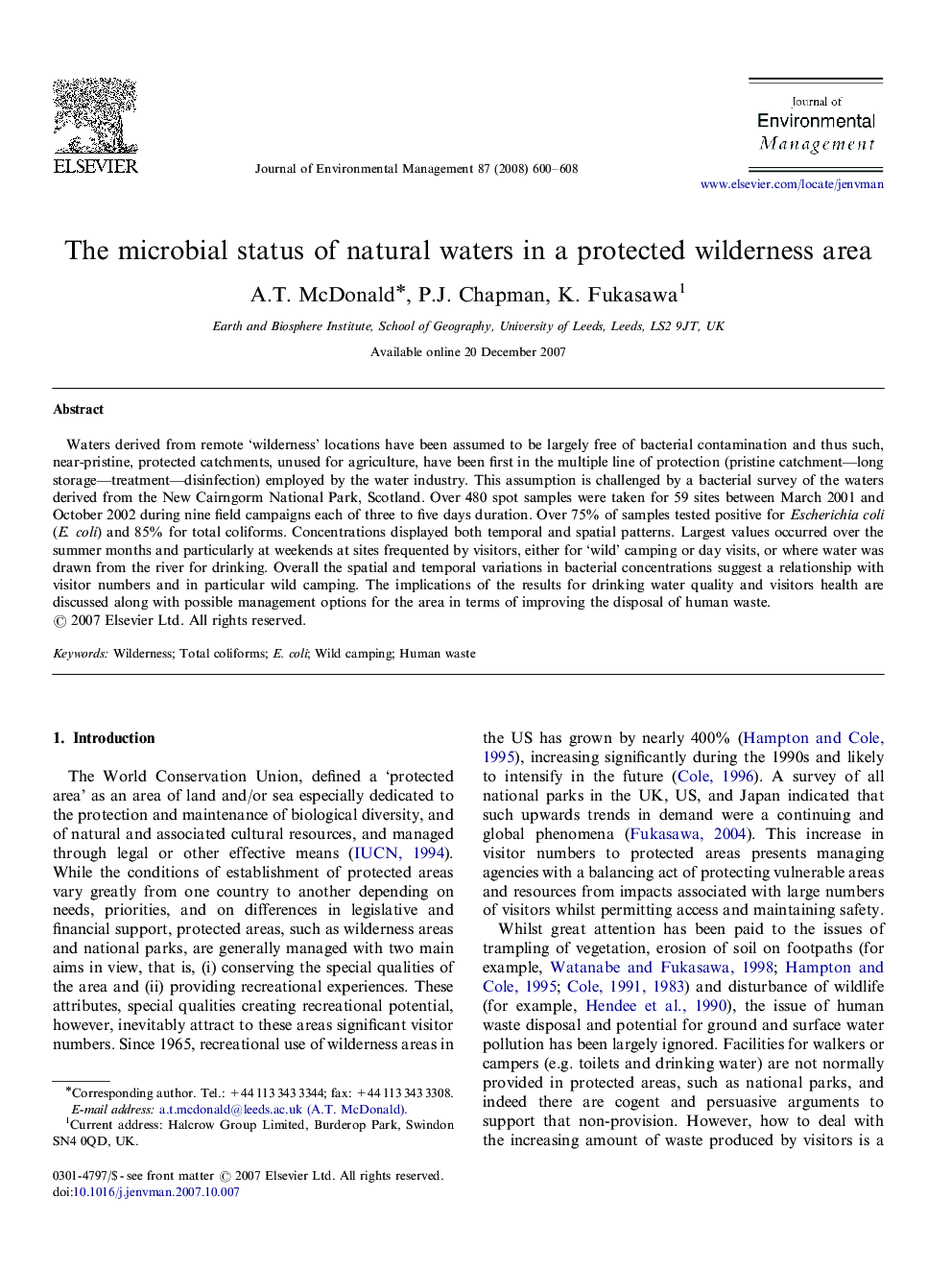| Article ID | Journal | Published Year | Pages | File Type |
|---|---|---|---|---|
| 1058611 | Journal of Environmental Management | 2008 | 9 Pages |
Abstract
Waters derived from remote 'wilderness' locations have been assumed to be largely free of bacterial contamination and thus such, near-pristine, protected catchments, unused for agriculture, have been first in the multiple line of protection (pristine catchment-long storage-treatment-disinfection) employed by the water industry. This assumption is challenged by a bacterial survey of the waters derived from the New Cairngorm National Park, Scotland. Over 480 spot samples were taken for 59 sites between March 2001 and October 2002 during nine field campaigns each of three to five days duration. Over 75% of samples tested positive for Escherichia coli (E. coli) and 85% for total coliforms. Concentrations displayed both temporal and spatial patterns. Largest values occurred over the summer months and particularly at weekends at sites frequented by visitors, either for 'wild' camping or day visits, or where water was drawn from the river for drinking. Overall the spatial and temporal variations in bacterial concentrations suggest a relationship with visitor numbers and in particular wild camping. The implications of the results for drinking water quality and visitors health are discussed along with possible management options for the area in terms of improving the disposal of human waste.
Related Topics
Physical Sciences and Engineering
Energy
Renewable Energy, Sustainability and the Environment
Authors
A.T. McDonald, P.J. Chapman, K. Fukasawa,
